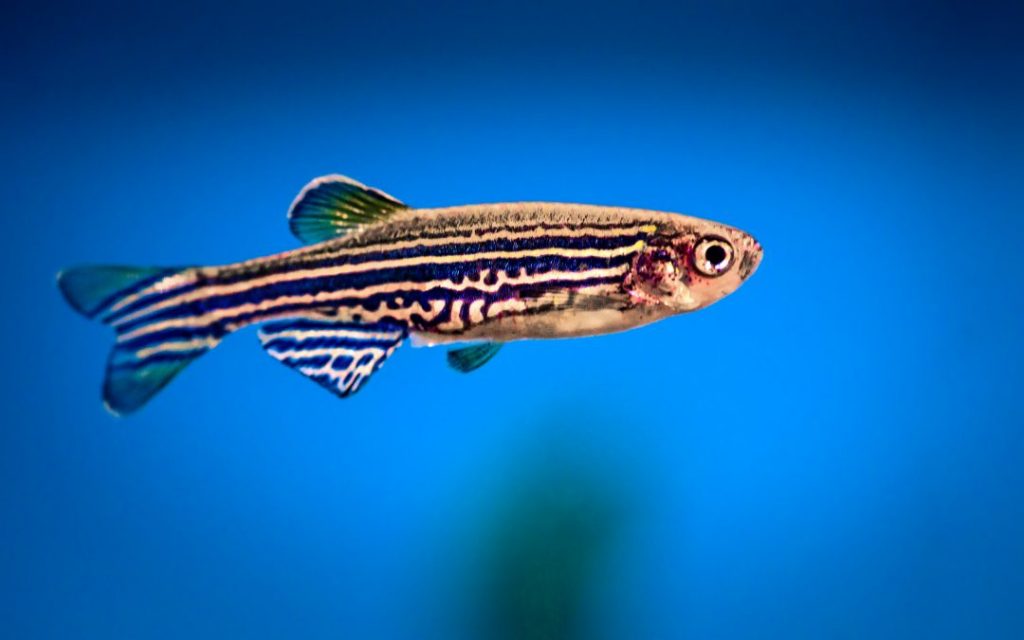ITSN1 Modeled in Zebrafish as Cause for Nephrotic Syndrome
By Daanya Salmanullah

ITSN1 is a gene that causes steroid-resistant nephrotic syndrome (SRNS), an early onset disease that usually leads to end-stage renal disease. Using zebrafish breeding, survival curves, fin-clipping, and PCR methods, we tested whether being homozygous for the gene in zebrafish correlated to early die off — or on a broader scale, whether single mutations in a gene cause detrimental effects in a child’s developing kidney.
We began with our hypothesis, which dictates that single mutations in a gene will cause detrimental effects in children’s developing kidneys. Zebrafish are a good animal model to test this because they exhibit relatively simple kidney function and have a genome suited to testing ITSN1 due to similarities to the human genome. On a more specific level, we hypothesized that zebrafish that have two copies of the mutated allele for ITSN1 (in other words, zebrafish that are homozygous for the gene) would experience earlier die off than those that are heterozygous or wild type due to early onset of the disease caused by the mutation.
Die off was monitored through survival curves. In our curves, we used specific zebrafish that were designed a few years prior to this current experiment using CRISPR/Cas9 to insert the desired mutation of ITSN1 (oligos designed with the website CHOPCHOP) into wild type zebrafish embryos before the cells began dividing to ensure its effect in the genome. The gene for ITSN1 was discovered as a cause for SRNS through whole exome sequencing. Embryos were generated through breeding pairings of one male and one female fish with the ITSN1 gene. The embryos were kept in fish water (made with Instant Ocean) and 0.002% methylene blue for 24 hours. After this period, larvae were kept in regular fish water, and at 5 days post-fertilization — when all of the larva’s swim bladders were inflated —the fish were transferred into rotifer feeding solution. The rotifer feed was switched out every 2 days. The fish were monitored, keeping track of die off and phenotypes such as edema, twice a day until 21 days post-fertilization. We monitored the genotypes of the fish by extracting the DNA of the larvae after the end of the 21 days using polymerase chain reaction (PCR) since ITSN1 has few visible phenotypes. Subsequently, the samples were sent to Genewiz® for sanger sequencing. We had hypothesized that the homozygous zebrafish should experience an early onset of disease/early die off, which was ultimately visible in our data.
However, since our research is still ongoing, as alluded to before, we do not have any conclusive results yet to present. More trials must be conducted to have a more accurate survey of how mutations of the ITSN1 gene cause nephrotic syndrome in zebrafish.